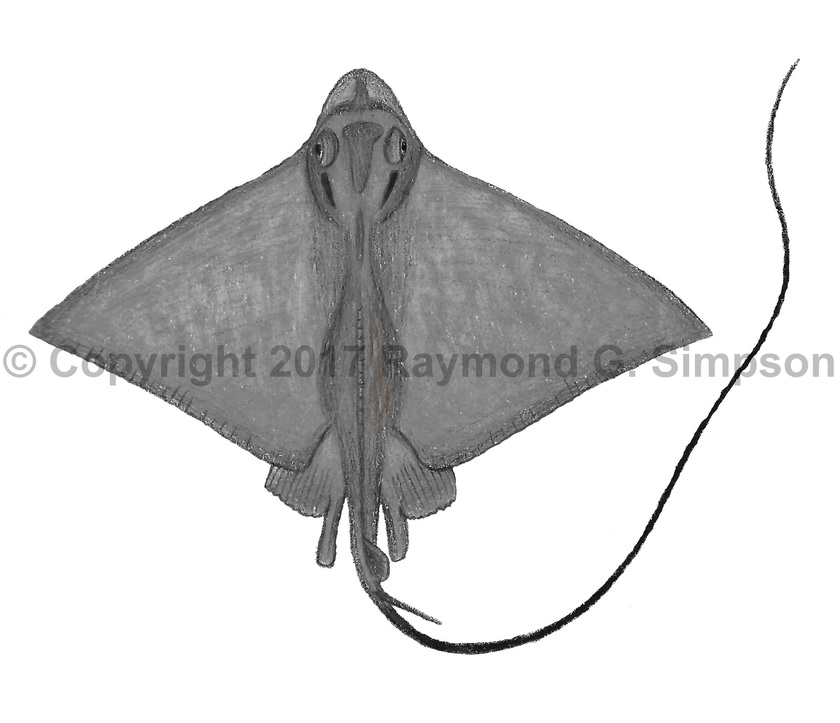
Common Name
Bullnose Eagle Ray
Year Described
Lesueur, 1824
Identification
Disk broad and rhomboidal. Width of disk longer than length of body. Trunk thickened, especially dorsally. Head projects noticeably and more narrow than relatives. Snout fleshy, conical and projecting (much longer than mouth width). Mouth subterminal. Nasal curtain without V-shaped notch. Teeth in 7 rows of plates, with central plates being widest. Spiracles prominent on side of head. Pectoral fin joins head under level of eye and connects to rostral lobe. Anterior disk margin straight. Posterior disk margin slightly concave. Tips of pectoral fin falcate and pointed. Pelvic fins project beyond rear disk. Tail long with 1-2 spines at base near dorsal fin. Dorsal fin small and inserted at the free tips of pelvic fins. Skin smooth without denticles. Large specimens can have a poorly developed line of midline denticles.
Color
Dorsum gray, brown, or gray-brown. Markings range from almost plain to covered with many white flecks and spots. Ventrum white with gray near the pectoral tips, pelvic tips and posterior margin. Tail black.
Size
Maximum size to 106cm in width but usually <75cm in width.
Habitat
Found near or on bottom in coastal waters. Enters estuaries.
Range
New England to N. Argentina, including the Caribbean Sea and the Gulf of Mexico.
References
Last, P.R., White, W.T., Carvalho, M.R. de, Séret, B., Stehmann, M.F.W & Naylor, G.J.P (Eds.). 2016. Rays of the World. CSIRO Publishing, Melbourne. 790p.
Other Notes
The distance between the fifth gill slits is less than the distance between the nostrils, which distinguishes this species from the other two Myliobatis in the western Atlantic. Position of the dorsal fin further forward, coloration, and shape of snout are also useful characters. Most similar genetically to M. longirostris from the eastern Pacific.